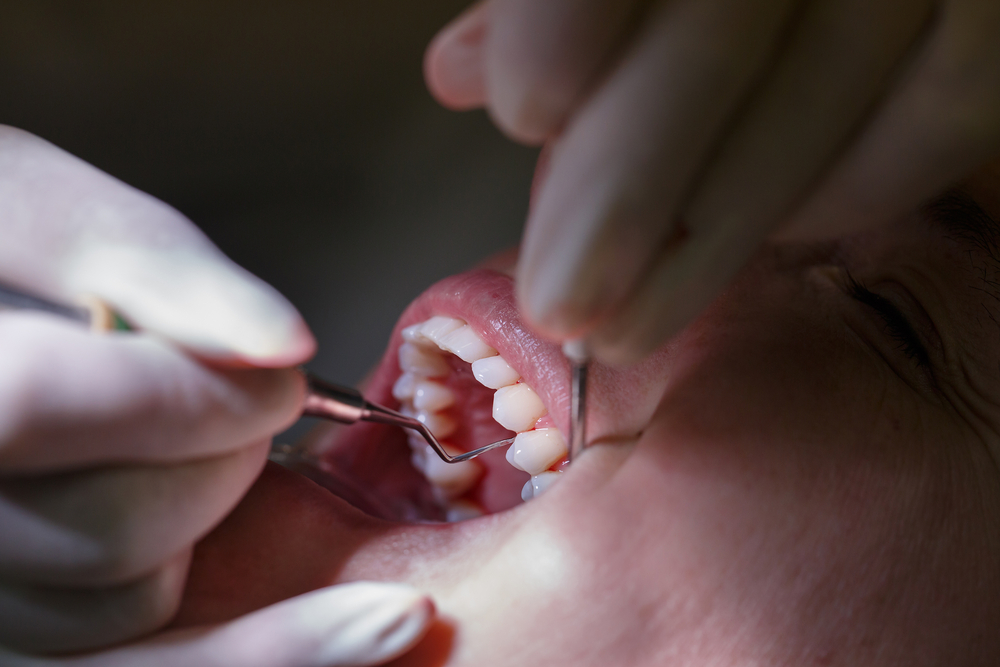
Gum recession develops gradually and patients typically fail to realize what they are dealing with until it’s too late. As such, even those with proper oral hygiene can experience a gingival recession.
Tooth sensitivity is usually the first worrying sign that should send you to your Dallas dentist. However, most patients ignore this symptom and ask for help only when they notice that some teeth look bigger than the others.
With that in mind, here’s everything you need to know about gum recession, from what causes it to how you can manage it.
Facts about Gum Recession
When the gum tissue around the teeth wears off or pulls back, exposing the tooth, gum recession occurs. In some severe cases, gums can recede so much that even the root of the tooth becomes visible. A gap or “pocket” will appear between the tooth and gum, making it easier for bacteria to build up and accelerate the onset of plaque and cavities.
If gum recession is not treated, both the supporting tissue and the tooth itself can become severely damaged, leading to tooth loss.
What Are the Causes?
There are several factors behind gum recession:
- Periodontal diseases
- Genes
- Aggressive tooth brushing
- Poor dental care
- Hormonal changes
- Tobacco
- Grinding and clenching
- Crooked teeth
- Lip or tongue piercings
How Can You Treat it?
Although you may be tempted to use over-the-counter medicines to stop your gums from receding, the truth is that only a professional can determine the best course of treatment, according to your individual needs and unique situation. Depending on the severity of the issue, the doctor can prescribe several treatments.
In the case of mild gum recession, a thorough dental cleaning procedure can be enough to solve the problem. The intervention, known as tooth scaling, consists of removing the plaque or tartar that has built up and smoothing out the root area to make it more difficult for bacteria to attach to it. In some cases, your dentist may prescribe antibiotics to ensure that all bacteria has been eradicated.
If the issue is more severe and has already lead to loss of bone, you may need to undergo gum surgery to treat it. There are several types of surgical procedures:
- Regeneration – This procedure is ideal if the bone that supports the teeth has also been affected and the patient needs to regenerate both the lost bone and tissue. The dentist will fold the gum tissue, clean the bacteria, and then apply a regenerative material to help the body regenerate the affected area. The finishing touch involves securing the gum tissue over the root or the tooth. According to one report, this procedure has the highest incidence of success.
- Open Flap Scaling and Root Planing – With this procedure, the doctor will fold back the affected tissue to remove bacteria from the “pocket.” After cleaning the area, the dentist will secure the tissue back into place, eliminating or reducing the size of the pockets.
- Soft Tissue Graft – The most common gum tissue graft procedure is the connective tissue graft. Tissue from under a flap of skin from the roof of the patient’s mouth is cut and then stitched to the gum tissue in the affected area.
Your oral health can have a dramatic impact on your overall wellbeing. That’s why it’s important to reach out to your dentist whenever you notice that something is not right, even if the symptoms are mild or barely noticeable. If you are looking for a professional and trusted Dallas dentist, go to Dallas Dental Wellness, where you can find a team of professionals ready to give you a healthy smile.
Sources
https://www.colgate.com/en-us/oral-health/conditions/gum-disease/receding-gums-and-treatment-and-causes-0214
https://www.webmd.com/oral-health/guide/receding_gums_causes-treatments#1
https://www.colgate.com/en-us/oral-health/conditions/gum-disease/can-receding-gums-grow-back-0217
